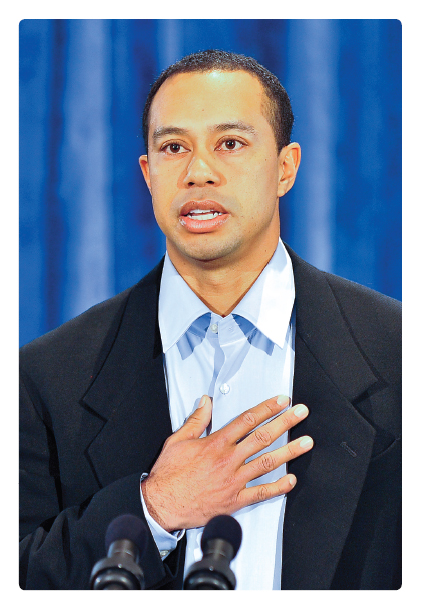Managing Your Speech Delivery
Step 4: Rehearse isn’t just about the delivery mode you will use. Practicing your delivery will help you feel more comfortable and confident, fostering a sense of closeness with your listeners and gaining their respect.

With a select crowd of media, family, and friends seated in the room, Tiger Woods looked straight into the television camera and apologized for the sordid sex scandal that ended his marriage and jeopardized his golf career. Reading from a manuscript, Woods took over 13 minutes to apologize for his marital infidelity, state that he was getting professional counseling, and beg for privacy as his family struggled to repair their shattered lives. Although Woods said all the right things—“I am deeply sorry for my irresponsible and selfish behavior I engaged in” (CNN, 2010)—and used gestures known to engage audiences, such as eye contact and erect posture, the news media questioned the authenticity of his public apology. One editorial noted that “Tiger Woods’ public apology . . . had all of the fingerprints of practiced public relations advisers,” and that although the speech was smart, it was also empty—Woods never acknowledged the harm he caused to those outside his family and kept the focus on himself (“Tiger,” 2010). Others thought his speech appeared overly rehearsed, calculating, and lacking genuine emotion. The most caustic critics saw the speech as a ploy to win back the corporate sponsors who had dumped Woods after news of the scandal broke.
Woods’s delivery created skepticism in his listeners because his speech lacked two key elements: immediacy and a powerful speech style. Immediacy is a sense of closeness that your audience feels toward you as a speaker (Mehrabian, 1972). You create immediacy by using familiar language and engaging nonverbal behaviors. Communicators who show immediacy are often described as warm and approachable (Richmond, McCroskey, & Johnson, 2003). The other important element in speech delivery is the ability to present yourself and your message confidently. Known as a powerful speech style, these verbal and nonverbal behaviors gain the respect of your listeners (Fragale, 2006; Hosman, Huebner, & Siltanen, 2002). Woods’s failure to convey these two elements is why people in the audience distrusted his message. To avoid a similar fate, you’ll want to convey immediacy and project a powerful speech style in your presentations while also managing any speech anxiety you may feel.